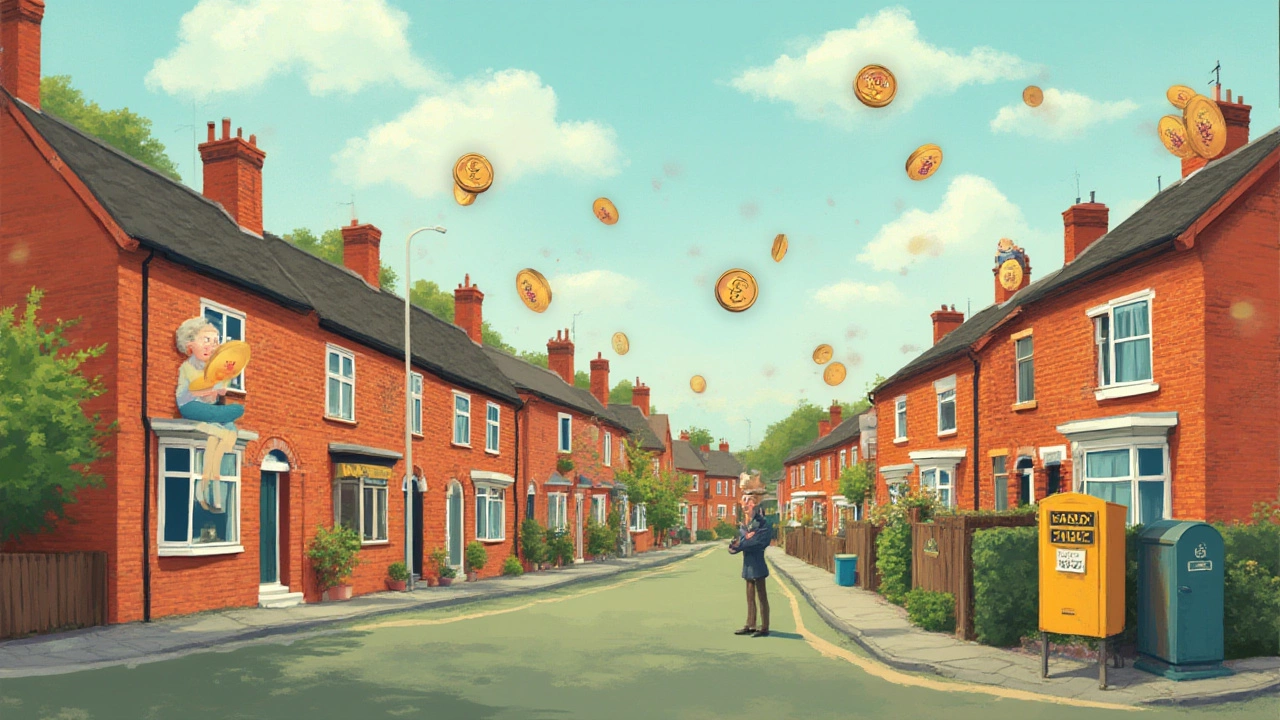Imagine opening your mailbox and spotting another bill—your home insurance premium, that necessary evil tied to the American dream. Most people don’t talk about it until it jumps to an eye-watering price or until disaster strikes. You might be surprised by how much this bill can vary—even on the same street. Let’s dig inside the numbers you won’t hear from your neighbour over the fence.
What Is the Average Cost of Home Insurance in America in 2025?
The question sounds simple, but, wow, the answer isn’t. In 2025, the average home insurance premium in the United States landed around $2,150 per year for a policy with $300,000 dwelling coverage, according to the National Association of Insurance Commissioners. But here’s where it’s wild: Some people in Florida and Louisiana right now are staring at bills north of $5,000, while Midwesterners might squeak by at less than $1,500 a year. And that’s before touching on the hidden fees, home value differences, or the surprises within your policy’s quirks.
It’s not just about location either—credit score, claims history, age of your home, even the type of dog in your backyard make the numbers dance. Your 1920s fixer-upper downtown and your friend’s new-build in a gated suburb won’t see the same rates. Curious to know where your state stands? Here’s a quick comparison from actual 2025 data:
| State | Average Annual Premium (2025) |
|---|---|
| Florida | $5,095 |
| Louisiana | $4,739 |
| Texas | $3,452 |
| California | $2,238 |
| Illinois | $1,579 |
| New York | $1,849 |
| Utah | $1,123 |
Cost fatigue is real, especially since premiums have shot up nearly 23% since 2023 due to inflation, rebuilding expenses, and extreme weather. The increase is eye-popping if you’ve renewed a policy recently. And for those paying monthly, expect the math to hurt: $2,150 splits into about $179 per month, but many states see $400+ per month brackets now.
Why Are Home Insurance Rates So High—and Rising?
Some Americans feel like home insurance hikes don’t make sense. The culprit isn’t just greedy companies. The past couple of years have been a perfect storm: wildfires blazing through California, monster hurricanes battering Gulf states, and even hail storms trashing roofs across the Midwest. Every time an insurer pays out for disasters, they tighten their calculators for everyone next year.
Building material prices went through the roof—literally. Lumber that shot up 35% in 2022 never fully dropped back, and even nails and glass windows now come with fancy price tags. More expensive materials push up the "replacement cost" on every policy renewal. New homes cost about $110,000 more to rebuild now than they did in 2019.
Insurers plug your ZIP code into their models alongside local crime data, the distance to the nearest fire hydrant, and your home’s year built. Live anywhere with wildfire risk or a coastline? The system dings you. Multiple hail storms in one area last year? You'll pay for it, even if your shingles are still pristine.
Then comes climate change, that persistent troublemaker. About 35% of the jump in premiums over the last three years comes from climate-driven disasters: flash floods in Vermont and Kentucky, Arizona heat domes shriveling pipes, and tornado clusters twisting up Oklahoma. One major claim from a windy night can raise your rate for years. The biggest tip? Loyalty to an insurer doesn’t guarantee a price break anymore. Just last year, three national insurance companies limited or stopped writing new home policies in high-risk states due to catastrophic losses. So, Americans shop around out of necessity.

What Actually Affects How Much You Pay?
Ask three homeowners in the same city and you might get three answers for their home insurance bill. Here’s what really swings the price:
- Location: States hit by hurricanes (Florida, Louisiana, Texas) are regularly quoted double the national average. Conversely, places with fewer disasters like Idaho or Wisconsin keep rates low.
- Home Value and Age: High-value homes, historic charmers, and houses with old wiring or roofs all bump up the bill. Insurance for a $1.2 million property with a slate roof in San Francisco isn’t like insuring a $250,000 condo in St. Louis.
- Credit Score: Most insurers use this, quietly, as a factor. Good credit usually brings your price down, but a drop—even from a single missed utility payment—can hike your rate next year. Credit weighing isn’t allowed everywhere: California, Maryland, and Massachusetts banned it. But in most states, it counts.
- Claims History: File a claim—especially for water or wind damage—and some insurers boost your premium by up to 40%. Multiple claims? Shopping for a new insurer turns into detective work since old claims stay in databases for up to seven years.
- Deductibles and Coverage: Higher deductibles lower premiums but can bite if disaster hits. Customizing coverage, like adding flood or earthquake insurance (not included by default), makes a big difference.
- Discounts: Home security systems, new roofs, smoke alarms, bundled auto+home policies—all can knock down costs by 5-20%. But you need to ask, not all discounts are handed out without prompting.
Some newer factors shocked people recently. Roof age and type? Many insurers deny claims on roofs over 20 years or double deductibles for them. Living within five miles of a fire station? Huge perk in rural areas. And, believe it or not, even the presence of a backyard trampoline or certain dog breeds lifts your rates—some insurers simply won’t cover homes with them.
Ways to Slash Your Home Insurance Bill
All hope isn’t lost for budget-weary homeowners. Here are a few ways Americans are beating the premium game in 2025:
- Shop Every Year: Loyalty only pays off if your insurer matches the market. Use online quote tools each renewal—some people cut their bill 15% just by switching companies.
- Ask for Every Discount: Seriously, call and ask. Got a new water leak sensor? Upgraded security lights? Retired military or a professional affiliation? Insurers often have quirky hidden discounts.
- Bundle Policies: Combining your auto and home insurance can carve 10-25% off the combined price, plus it’s easier to manage.
- Raise Your Deductible: Jumping from a $1,000 to $2,500 deductible can save you several hundred dollars, as long as you keep an emergency fund handy for those rare claims.
- Reassess Coverage—Don’t Over-Insure: Rising home values mean rising coverage, but take photos, do a home inventory and discuss with your agent. Don’t pay for add-ons you’ll never use.
- Stick to Clean Claims: Only file major claims. Cover small repairs yourself when possible so your premium doesn’t spiral next renewal.
- Keep Your Credit Healthy: Late credit card payments or new debt spikes can affect not just your mortgage rates but also your insurance price.
- Update Home Features: A new roof, storm shutters, reinforced garage doors, and upgraded plumbing lower risk and make you look better on paper to insurers.
Bonus trick: ask your insurer to re-run a new valuation every couple of years. Sometimes inflated coverage lingers from a big remodel years ago and you end up paying too much.

The Bottom Line on Home Insurance in 2025
There’s no one-size-fits-all answer to American home insurance costs, but what’s clear is the average family pays more than ever. Climate, construction costs, and even credit scores sit behind the formulas. If you’re expecting rates to settle down, don’t count on it—policy prices have climbed every year since 2017, some years by double digits. It’s all about finding the best balance: enough coverage to handle a real disaster, but smart choices so you don’t overpay for peace of mind.
Want to know if you’re getting a fair deal? Compare your current rate to the table above. If you’re on the high end, shop around—big savings still exist in 2025. And if disaster strikes? Knowing what’s in your policy (and what’s not) could save you thousands. That’s the real value—being prepared without being broke.
